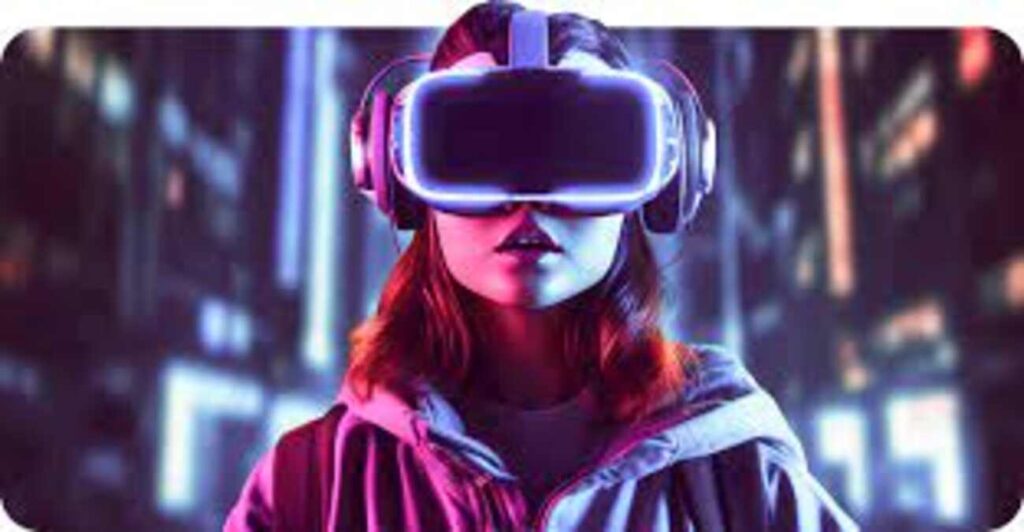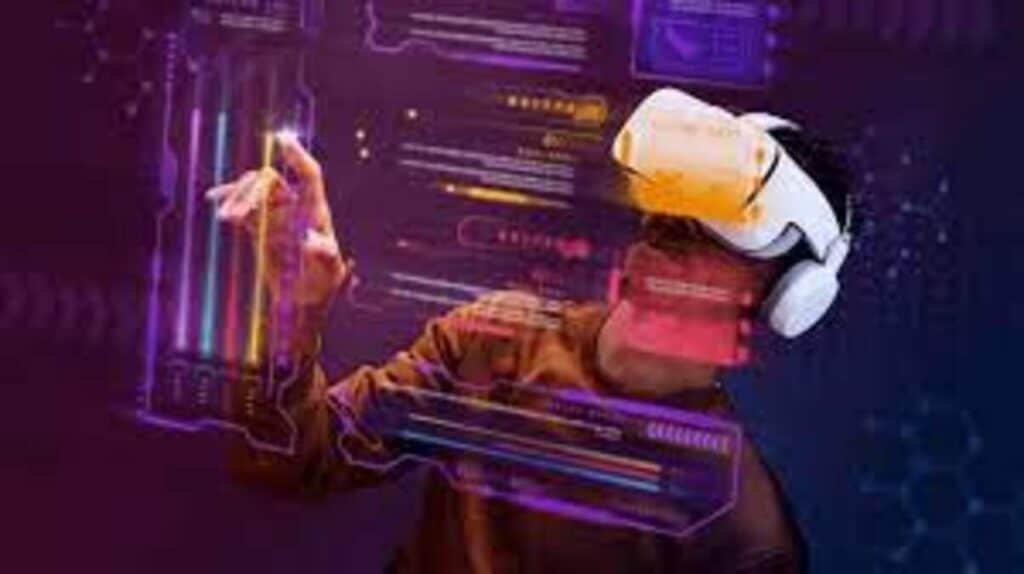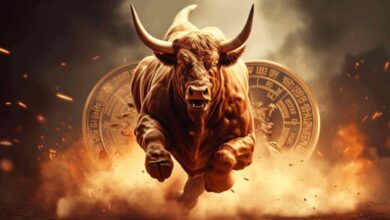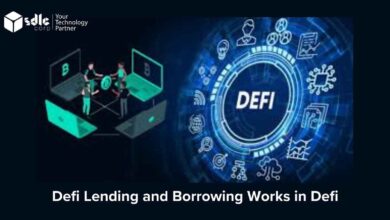Crypto Virtual Reality: The Best Powerful Comprehensive Guide

Crypto Virtual Reality in the evolving world of technology, virtual reality (VR) and then augmented reality (AR) have emerged as two of the most innovative. Tools shaping our digital experience. These technologies, while often compared, serve distinct purposes and then offer unique possibilities, particularly in the realm of cryptocurrency, blockchain ecosystems, and then platforms like Kraken Crypto. In this article, we will explore the key differences between VR and then AR, their role in the cryptocurrency landscape, and then how they can reshape our interactions with digital currencies and then virtual markets.
What is Virtual Reality (VR)?
Virtual reality is an immersive technology that allows users to interact with a computer-generated environment as though it were the real world. Through VR headsets such as the Oculus Rift or HTC Vive, users are transported into a fully digital environment. This experience is complete with simulated visual, auditory, and then sometimes haptic sensations, creating a complete, all-encompassing virtual environment. VR replaces the user’s surroundings entirely with a new, digitally-created universe.
In cryptocurrency and then blockchain applications, VR can be used to visualize data, create immersive trading environments, and then enhance user interaction with digital platforms such as Kraken Crypto. For instance, users could enter a virtual exchange space to explore cryptocurrency markets, analyze trends, and then make trades in real-time using avatars in a completely immersive environment.
Applications of VR in the Crypto Space Crypto Virtual Reality

- Immersive Trading Platforms: As the cryptocurrency market evolves, virtual reality trading rooms have the potential to revolutionize the way traders interact with markets. Instead of viewing charts on a screen, VR technology allows users to “walk” through the market, manipulate data in real time, and then engage with trading interfaces on a much more intuitive and physical level.
- Virtual Crypto Conferences and then Meetups: The cryptocurrency industry is built on a foundation of community and then collaboration. Virtual reality provides an innovative space for hosting global conferences, virtual meetups, or expos without the constraints of geographic boundaries. Platforms like Kraken Crypto can leverage VR to connect professionals, enthusiasts, and then investors in one immersive virtual space.
- Educational VR Platforms for Crypto Traders: Virtual reality offers an ideal environment for new traders to learn how the market operates. By creating immersive educational experiences, beginners can navigate a simulated market and then learn to trade cryptocurrency without the risk of losing real money.
What is Augmented Reality (AR)?
Augmented reality, on the other hand, enhances the real world by overlaying digital information onto a user’s physical environment. Unlike VR, which creates an entirely new reality, AR adds to the world around. The user through devices like smartphones or AR glasses. This makes it easier for people to interact with both physical. Then digital elements simultaneously, which can offer dynamic and then context-rich user experiences.
In the crypto realm, AR technology can significantly enhance how users interact with physical and then digital currencies. For example, AR apps could allow users to view live cryptocurrency data directly. Their surroundings, or visualize real-world objects that are linked to blockchain assets.
Applications of AR in Cryptocurrency Crypto Virtual Reality
- Augmented Crypto Wallets: Imagine scanning a physical item or location with your smartphone and then instantly receiving augmented details about its blockchain provenance, value, or even ownership status. This could be a revolutionary step in making cryptocurrency more accessible to the average user. Through AR, cryptocurrency wallets could display real-time balance updates or transaction details as users move through their physical environment.
- Enhanced Crypto Trading Interfaces: In the context of trading, AR can offer a layer of real-time data to users. As traders walk through a physical space, they could view holographic representations of crypto assets, price trends, and then market shifts projected directly into their surroundings. This kind of integration can elevate the trading experience, providing seamless access to live market data and then deeper insights.
- AR-Based NFTs and Collectibles: Augmented reality can be a game-changer for the booming market of non-fungible tokens (NFTs). AR technology can allow users to project NFTs into the physical world, offering a more interactive and then engaging experience. For example, an NFT owner could view their digital artwork displayed on a physical wall through their AR glasses.
Key Differences Between VR and AR in Crypto Virtual Reality
While both VR and then AR offer exciting possibilities, they serve different functions in the cryptocurrency world. The key differences between these technologies lie in how they immerse users and then extent to which they alter the user’s perception of reality.
- Immersion: VR provides a completely immersive experience, where users are entirely absorbed into a digital environment. In contrast, AR integrates digital elements into the real world, enhancing physical surroundings without replacing them.
- User Interaction: In VR, users typically interact with the environment using handheld controllers or motion-sensing devices. In AR, interaction is more seamless, often involving gestures or simply moving through physical space while devices overlay digital content.
- Application in Cryptocurrency: VR’s potential in the crypto space is focused on creating virtual trading environments, immersive learning experiences, and then large-scale global meetups in a virtual setting. AR, on the other hand, is more suited to enhancing crypto wallets, visualizing data in real-time, and then projecting digital assets into the real world.
Virtual Reality the Future of Kraken Crypto Crypto Virtual Reality

Platforms like Kraken Crypto stand then to benefit significantly from the integration of VR and then AR technologies. As the demand for more immersive and accessible trading platforms grows, Kraken can leverage these tools to create an enhanced user experience that rivals traditional financial platforms.
Virtual Reality Integration in Kraken Crypto Virtual Reality
One of the key areas where Kraken could explore VR is in the development of immersive trading environments. Users could enter a virtual trading floor, interact with 3D charts and data visualizations, and then make real-time trades using gestures and then voice commands. This kind of integration would not only set Kraken apart from other exchanges but also offer a cutting-edge trading experience that attracts tech-savvy investors.
Additionally, virtual reality could be used to simulate cryptocurrency conferences, offering an international space for investors, developers, and then enthusiasts to connect without having to travel. This could lower barriers to participation in global blockchain events and then create a more inclusive and then expansive crypto community.
Augmented Reality and Kraken’s Future Crypto Virtual Reality
AR presents Kraken with a unique opportunity to enhance the user experience by creating more intuitive. Then dynamic ways for traders to interact with their portfolios. For example, through AR glasses, users could view real-time updates. Their crypto holdings, receive notifications about market trends, and then visualize data directly in their physical environment.
Furthermore, AR could be employed to revolutionize how NFTs and then other blockchain assets are perceived and then interacted with. Users could project their NFTs into the real world, offering a novel way to showcase and then trade digital collectibles. This could deepen Kraken’s involvement in. The NFT space by providing users with tools that make their assets more tangible and interactive.
Blockchain and Virtual Economies in Crypto Virtual Reality
As VR and AR technologies evolve, they are poised to merge with blockchain technology, enabling The creation of virtual economies within these digital spaces. Blockchain can ensure transparency, security, and then decentralization within virtual economies, allowing users to trade digital assets with confidence. Platforms like Kraken Crypto could become central to this ecosystem, offering a secure. Then reliable exchange for virtual goods, services, and then cryptocurrencies.
Virtual Goods and Cryptocurrency
In virtual reality spaces, digital goods—ranging from virtual real estate to digital art. Then clothing—can be bought and then sold using cryptocurrencies. Blockchain’s role in these economies is to secure transactions, authenticate ownership. Then ensure that digital assets are rare or unique (as is the case with NFTs). As a result, VR could pave the way for thriving virtual economies where users can earn, trade. Then spend cryptocurrency in a completely immersive world.
AR and Blockchain-Linked Assets
On the AR side, blockchain can enable a system where physical objects are linked to digital tokens or smart contracts, allowing for enhanced asset verification. For example, a rare physical collectible could have a blockchain record linked to it, which can be viewed through AR. This allows users to verify ownership and then authenticity. The help of blockchain while interacting with the physical object in the real world.
The Role of Kraken Crypto in the VR and AR Revolution
As one of the leading cryptocurrency exchanges, Kraken Crypto is well-positioned to lead. The charge in integrating VR and AR into the broader crypto ecosystem. By adopting these technologies, Kraken can offer users unparalleled access to data, more immersive trading environments. then enhanced interaction with digital assets.
In the coming years, as VR and AR technologies mature and then become more accessible. We expect to see them increasingly integrated into the way we interact with digital currencies, NFTs, and blockchain networks. Kraken, with its innovative platform and forward-thinking approach. A major player in this transformation, offering its users the best of both the virtual and augmented worlds.
Read more: Virtual vs. Augmented Reality





